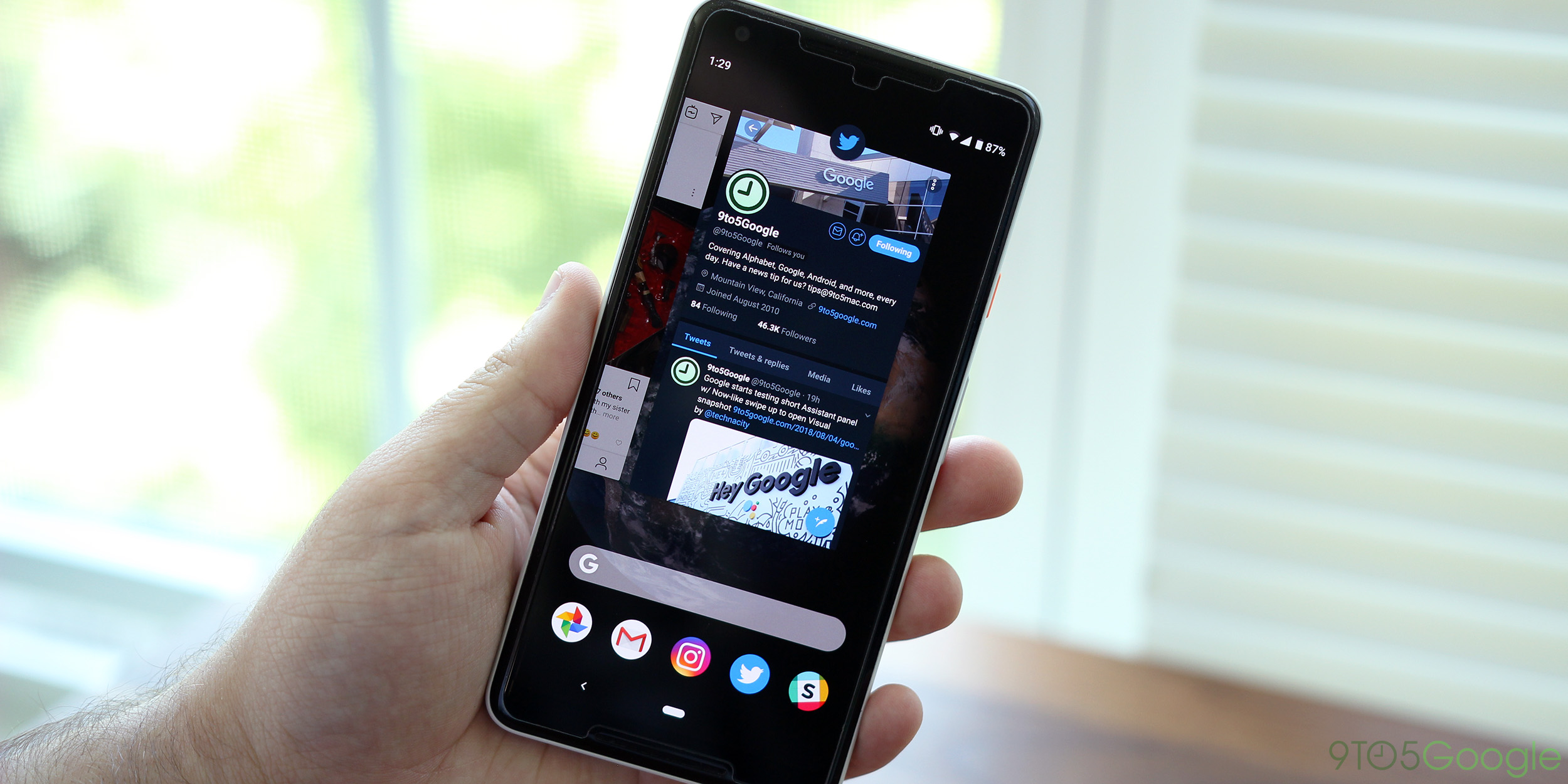
One of the biggest new features in Android 9 Pie is Google’s new take on navigation. However, that isn’t enabled by default when you upgrade your device. Instead, it’s hidden behind a toggle. Apparently, though, Google’s next flagship, the Pixel 3, won’t be that way.
Update: Android Central has revised its piece to note that “future Google phones… will ship with gesture navigation turned on by default.” This leaves open the possibility that the three-button navigation system will remain a user accessible option for the moment, though Google is clearly prioritizing gesture nav moving forward.
Gesture navigation has become a big deal in the mobile space, largely thanks to Apple’s adoption of the approach on its iPhone X. Google’s take on gesture navigation may not be as popular among many early beta testers, but apparently, it’s still going to end up being not only the default, but the only navigation method on the Pixel 3.
Speaking to Android Central in a recent interview, Google’s EK Chung explains the company’s stance on design with Android Pie, specifically giving us some interesting new details regarding Google’s plans for the new navigation method.
Google is making this its primary navigation system going forward. While Pixel devices that are updated from Oreo will still see their three-button navigation by default with an option to switch to gestures, future Google phones (and any other manufacturer that wants it) will ship with only gesture navigation.
Interestingly Google isn’t requiring this across the board, though. OEMs will be able to adopt Google’s gesture navigation or stick with the traditional three-button setup, as well as offer their own navigation method as we’ve seen many do recently including Motorola and OnePlus. Notably, Essential decided turn gestures on by default on the PH-1.
As mentioned earlier, quite a few vocal P beta testers weren’t too satisfied with Google’s take on gesture-based navigation, but it seems the company’s own studies on the change went quite well. After handing Pixels running these gestures to “normal” users and giving them a brief explanation of how the system works, Google found that these users found the system easy to use with some even mentioning how much they enjoyed the app switcher motion.
Chung also touched on how Android is treating the homescreen with Pie. As has already been noted, the app drawer becomes less of a part of the homescreen, and more a part of the system. She says:
This new design essentially merged the launcher functionality and switching functionality together into one swipe up … we intentionally detached the bottom layer from the launcher to make it accessible from anywhere, even within an app.

She also mentioned that placing the app drawer behind a second swipe up was completely intentional. Apparently, Google found that users end up going for one of the 5 suggested apps about 60% of the time.
Further, the interview touches on Android Pie’s design as a whole with “subtract, combine, prioritize, and clarify” being four core parts of how Google built this new version of Android, and simplification being a key part of the formula as well.
The idea behind an overall simplification of the operating system with Pie is that not every person is a die-hard Android user — in fact, most people aren’t. With Pie, Google wanted to make the system more approachable and desirable to everyone — and not just in terms of looks, but also how it actually works.
Chung also talked about Google’s Digital Wellbeing initiative, clarifying that this move isn’t necessarily designed to make you use your phone less, but rather to make everything quicker and more efficient. She says:
[Pie’s interface] is all about high efficiency, and making your interaction with your device more meaningful and efficient so that you can get things done and then get back to what’s really meaningful in your life … actually simplifying how people get things done.
It’s all related, making the OS efficient, powerful and highly productive, that way you can get your time back and then think about how you use your device and then use the digital wellbeing features to provide a little nudge to yourself to limit your time.
Android 9 Pie is rolling out now to Pixel devices (and the Essential Phone), and Digital Wellbeing is launching in full this fall for Pixel devices. In the meantime, users can sign up for early beta access to the feature.
- How to turn on gesture navigation in Android 9 Pie on Google Pixel devices
- How to sideload the Android 9 Pie OTA on Pixel, Pixel XL, Pixel 2, Pixel 2 XL
- How to sign up for Android 9 Pie’s Digital Wellbeing beta on Google Pixel devices
- Digital Wellbeing for Android Pie launching this fall, entering beta today for Google Pixel
Check out 9to5Google on YouTube for more news:
FTC: We use income earning auto affiliate links. More.




Comments